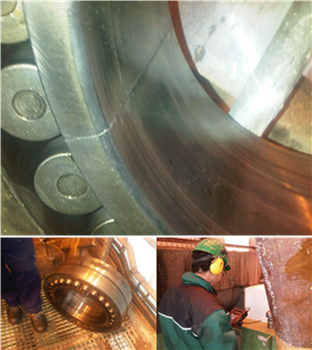measurement services of Acoustic Emission, available in DMC, are intended to identify the symptoms of equipment faults which manifest in the form of acoustic emission, Examples of such defects in bearings rotating at very low speed.
The acoustic emission is generally defined as:
The phenomenon is the Acoustic Emission of radiation of elastic waves in solids that occur when a material undergoes irreversible changes in their internal structure, for example as a result of crack formation or plastic deformation due to aging, temperature gradients or mechanical external forces.
In particular, Acoustic Emission the mechanical load occurs during the processes of materials and structures, accompanied by structural changes that generate local sources of elastic waves.
This results in small displacements of a surface material produced by elastic waves generated voltage or when the elastic energy accumulated in the material or its surface is rapidly released.
- In condition monitoring applications, the Acoustic Emission is the phenomenon of radiation elastic waves in solids, that occur when a material undergoes irreversible changes in their internal structure such as for example in cases of breakdowns bearings.
Through the acoustic emission measurement it is possible to detect at an early stage, Failure processes bearings rotating at very low speed, before it occurs stoppage of equipment, can classify and quantify the acoustic emissions measured.

Fields of application of acoustic emission measurement services:
Dynamic equipment
When used in the mechanical equipment allows identification of acoustic emission problems caused by friction between parts due to faulty or inadequate lubrication, formation and propagation of cracks.
Static equipment
The acoustic emission sensing allows the formation and propagation of cracks in static mechanical equipment or subject to fatigue.


